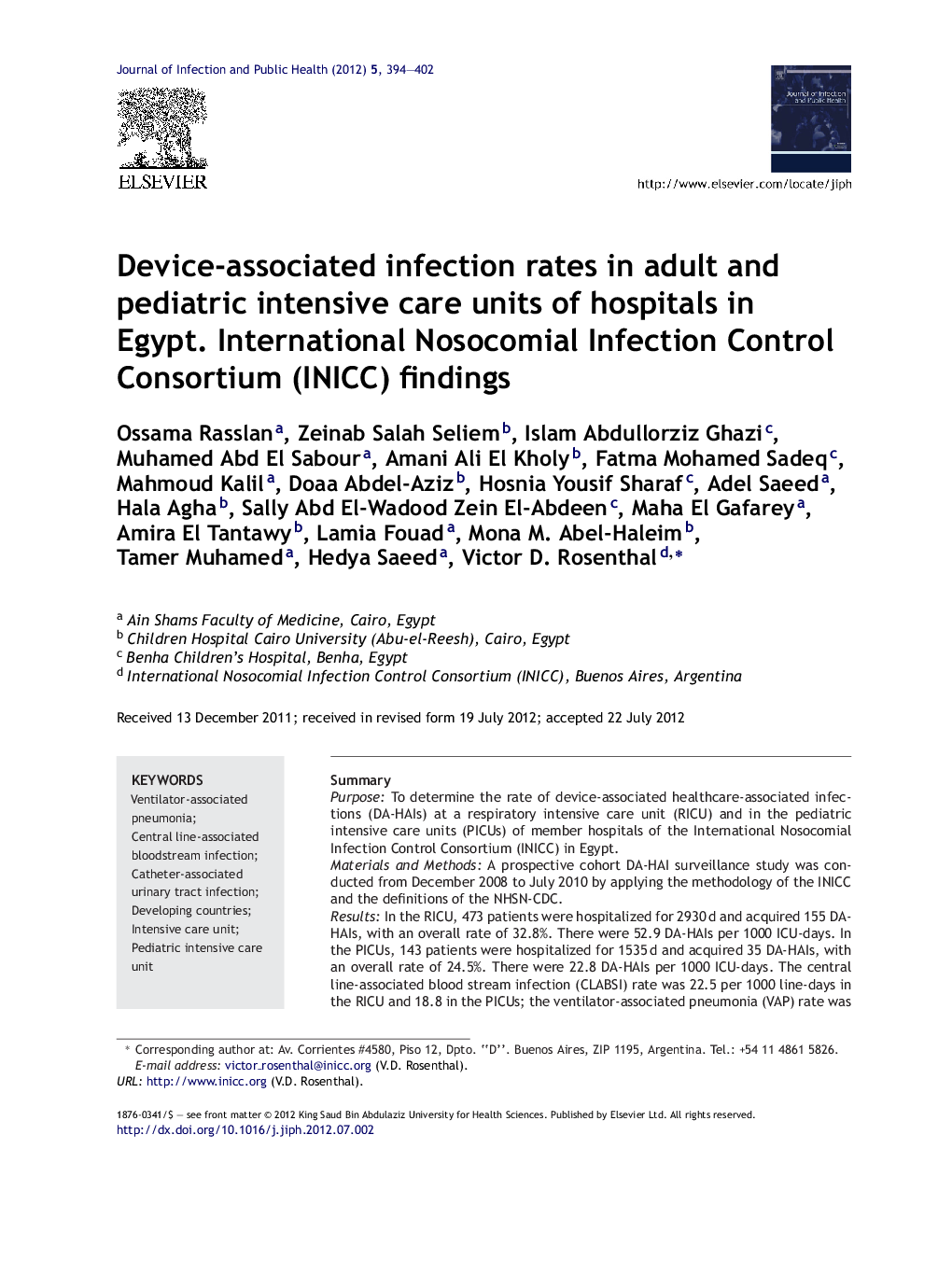| Article ID | Journal | Published Year | Pages | File Type |
|---|---|---|---|---|
| 3406376 | Journal of Infection and Public Health | 2012 | 9 Pages |
SummaryPurposeTo determine the rate of device-associated healthcare-associated infections (DA-HAIs) at a respiratory intensive care unit (RICU) and in the pediatric intensive care units (PICUs) of member hospitals of the International Nosocomial Infection Control Consortium (INICC) in Egypt.Materials and MethodsA prospective cohort DA-HAI surveillance study was conducted from December 2008 to July 2010 by applying the methodology of the INICC and the definitions of the NHSN-CDC.ResultsIn the RICU, 473 patients were hospitalized for 2930 d and acquired 155 DA-HAIs, with an overall rate of 32.8%. There were 52.9 DA-HAIs per 1000 ICU-days. In the PICUs, 143 patients were hospitalized for 1535 d and acquired 35 DA-HAIs, with an overall rate of 24.5%. There were 22.8 DA-HAIs per 1000 ICU-days. The central line-associated blood stream infection (CLABSI) rate was 22.5 per 1000 line-days in the RICU and 18.8 in the PICUs; the ventilator-associated pneumonia (VAP) rate was 73.4 per 1000 ventilator-days in the RICU and 31.8 in the PICUs; and the catheter-associated urinary tract infection (CAUTI) rate was 34.2 per 1000 catheter-days in the RICU.ConclusionsDA-HAIs in the ICUs in Egypt pose greater threats to patient safety than in industrialized countries, and infection control programs, including surveillance and guidelines, must become a priority.
► Surveillance of device-associated infections in intensive care units in Egypt is proposed. ► Using INICC methods and CDC-NHSN definitions enabled us to obtain comparative data. ► Systematic surveillance enables benchmarking against other health care settings. ► Device-associated rates in our settings are higher than in developed countries. ► Infection control programs with surveillance must be prioritized in these settings.
